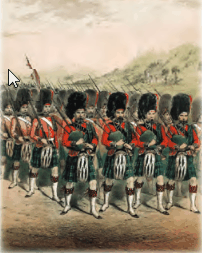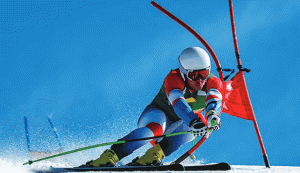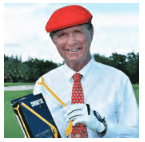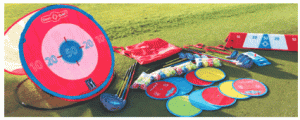The New Fundamentals of Teaching The Driver
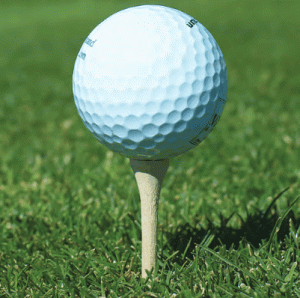 Okay, so in full disclosure, these fundamentals may not exactly be new, but hey, this catchy headline grabbed your attention, didn’t it? And we are going to introduce a thought that may be somewhat controversial. In any event, there are distinct differences between what was taught a number of years ago with what is necessary today to get maximum effectiveness out of the driver.
Okay, so in full disclosure, these fundamentals may not exactly be new, but hey, this catchy headline grabbed your attention, didn’t it? And we are going to introduce a thought that may be somewhat controversial. In any event, there are distinct differences between what was taught a number of years ago with what is necessary today to get maximum effectiveness out of the driver.
Back in the persimmon wood and balata ball era, the desired ball flight started low and then all of a sudden climbed up into the sky. This was due to the dimple pattern on the golf ball, the construction of the ball itself, and the downward strike that most good players employed, which resulted in much higher backspin rates than we see today.
We know now that to get maximum distance, the ball flight must be fairly high and the backspin rate fairly low. It wasn’t too long ago that a launch angle of 10° to 12° with backspin under 3,300 rpm was considered ideal. Launch monitors tell us that launch angles of 15°, 16°, and even 17° and 18° are required for golfers of average swing speeds to carry the ball its maximum distance, and spin rates should be under 2,500 rpm. TaylorMade Golf, a USGTF industry partner, tells us that the holy grail of driver ball flight is 17° of launch angle with 1,700 rpm of backspin. Today’s driver and shaft combinations make that possible, although it can be difficult for many golfers to achieve.
Golfers tend to make the same mistakes when it comes to the driver. They don’t tee the ball high enough and they don’t set up properly. They then tend to swing outside-in in relation to the intended target line with a downward strike and an open clubface, further robbing them of distance.
To correct these problems, the first thing is to make sure at least half the ball is teed above the top of the clubface. As traditionally taught, ball position should be opposite the forward heel. Many golfers suffer from a stance that is too narrow, and it’s recommended that the stance be wide enough so the insides of the heels are at least shoulder-width.
Here is where things get interesting. The USGTF Technical Committee sees golfers who, time after time, set up with open shoulders in relation to the feet and a back shoulder that is far too high. This results in not only improper alignment, but a center of mass and a body tilt that is too far forward. It is imperative that these golfers set up with square shoulders and a lower back shoulder, with the center of mass centered between the feet or even slightly back. Most golfers who are put in this position will tell you that they feel really closed to the target line with their shoulders and that they are leaning too far back, but a simple picture or quick video should convince them otherwise.
We’ve long been taught that a backswing that is too far to the inside will result in an over-the- top swing, but the Technical Committee has been seeing more and more golfers who incorrectly take the club back too far to the outside. Members of the Technical Committee have found success in encouraging players to take the club back more to the inside and returning the club from the inside with an upwards strike. This might go against what you’ve been taught or even your personal experience with some students, but we’ve found this is a necessity with many.
In order to return the club from the inside, students should be encouraged to keep their back to the target on the downswing much longer than they are used to. Many of these students spin their shoulders out prematurely, which throws the club to the outside and results in the dreaded outside-in swing path through impact. Another image that has worked well is to get the student to drive the butt end of the club into an imaginary target that is to the right of the target line. While technically the direction of the downswing path is determined by the quality of the transition move from backswing to downswing, getting a student to move the hands and arms in a certain direction can be a path to success. Please be aware, and we are not ignorant of the fact, that these tidbits of teaching instruction will not work on everyone. But when it comes to getting a student to deliver the clubhead to the ball in a certain way, we must be open to ideas that we may not have thought of or are different than what we may believe.
Equipment-wise, some students don’t want to go out and buy a new $500 driver every year, but the fact is that there are incremental improvements with each iteration of driver introductions by the major manufacturers. So while it’s not necessary to buy a new driver annually, a driver should be updated at least every 2-3 years. Manufacturers keep making the effective sweet spots on drivers bigger so that mis-hits will lose very little distance compared to sweet-spot strikes. Spin rates are being optimized and equipment makers are also finding ways to, in effect, get around the USGA limits on spring-face technology and have produced drivers with more ball speed the last couple of years.
The bottom line with teaching the driver is the ball flight must be fairly high with low spin rates. Through equipment and innovative teaching, we can get our students to take part in the driver distance revolution that has consumed the golf world the past several years.


